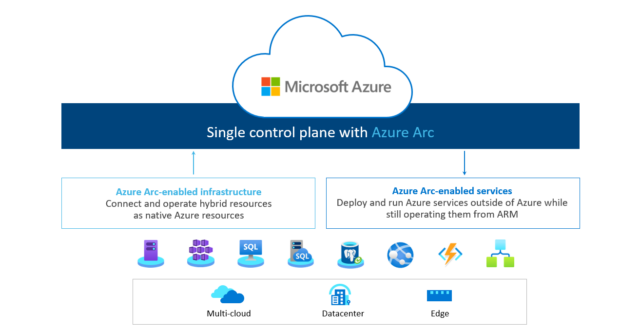We are excited to bring the latest updates to the Dell Integrated System for Microsoft Azure Stack HCI. This May 2022 release is designed to streamline Azure hybrid cloud for our users by providing tools to deliver a seamless Azure experience across distributed locations while optimizing and simplifying Azure operations on-premises and accelerating innovation that fuel their business.
Delivering Seamless Azure Experience
Our latest release adds unique software-driven integrations with Azure that simplify operations across distributed locations, whether in the core datacenters or dispersed edge locations.
Through enhancements to Dell Open Manage Integration for Windows Admin Center, this release enables Azure Arc to serve as the centralized control plane for distributed on-premises Azure Stack HCI deployments. Customers can now monitor the health of the Azure Stack HCI infrastructure, perform operational tasks such as cluster creation and expansion, enforce consistent compliance policies across locations and remediate any drift from the defined policies in the event of non-compliance – all through the central Azure Arc control plane.
These are important capabilities for our customers who often must manage their Azure Stack HCI assets deployed at multiple locations. By providing these capabilities, Dell brings consistency and predictability to these deployments while reducing operational overhead and complexity in managing multiple locations.
Optimizing Azure Infrastructure On-premises
While many of our users have adopted Cloud as a strategic imperative for building agile, flexible, responsive IT operations, they often take a hybrid and multi-cloud approach to infrastructure. Many of the workloads continue to reside on-premises due to the requirements around performance, data locality, security and compliance. The Integrated System approach Dell has taken to delivering Azure Stack HCI infrastructure on-premises eliminates many of the common pit falls of assembling their own systems.
The Dell Azure Stack HCI infrastructure is delivered as a fully engineered, integrated solution that is supported and updated as an integrated system, simplifying deployments, day-to-day operations and ongoing lifecycle management. This release further adds robust security capabilities, some native to Dell hardware while others through integration with and support for new capabilities Microsoft introduced in their latest Azure Stack HCI release. These capabilities include:
-
- Dell HCI Configuration Profile Policies for Azure Arc and Windows Admin Center (WAC) that prevent malicious threats and inadvertent changes to operating system, BIOS, and network settings.
- Dell Infrastructure Lock that protects system and configuration changes from unauthorized users
- Secured Core server by Microsoft software suite that provides added hardware security of infrastructure is fully implemented in Dell Integrated Systems.
- Azure Stack HCI adds Azure Arc’s policy and compliance services across all locations. Azure Virtual Desktop (AVD) service for Azure Stack HCI allows IT to have their data on-premises for regulatory and data sovereignty requirements.
These new capabilities demonstrate Dell’s continued commitment to delivering simplicity and robust infrastructure outcomes for the on-premises deployments that are an integral part of our customers’ multi-cloud strategy.
Accelerating Innovation and Workload Execution
Lastly, Dell has added new capabilities and configuration options to help our customers deploy and optimize workloads that drive organizational innovation. This release adds GPU node configurations with support for NVIDIA A30 GPUs. With this, customers can optimize and right-size their deployments that benefit from GPU resources. Artificial Intelligence (AI), Machine Learning (ML), analytics and Virtual Desktop Infrastructure (VDI) are some of the important use cases for our customers, now GPU support will accelerate these workloads.
Dell has also recently validated Microsoft Azure Virtual Desktop (AVD) solution with Login VSI benchmark tool. The benchmark results validate that a three node Dell Azure Stack HCI system is able to deliver 1200 concurrent user sessions. With the support for AVD, customers can now optimize infrastructure for their distributed workforce while utilizing this hybrid service delivered via Azure Cloud to on-premises virtual desktops, eliminating many complex configuration tasks involved in traditional VDI deployments.
This release adds a broad set of capabilities that help our customers realize a seamless Azure experience across locations, while optimizing on-premises infrastructure and accelerating workloads that drive innovation. Please review the solution brief and the video above for more details on Azure Stack HCI AVD solution.



